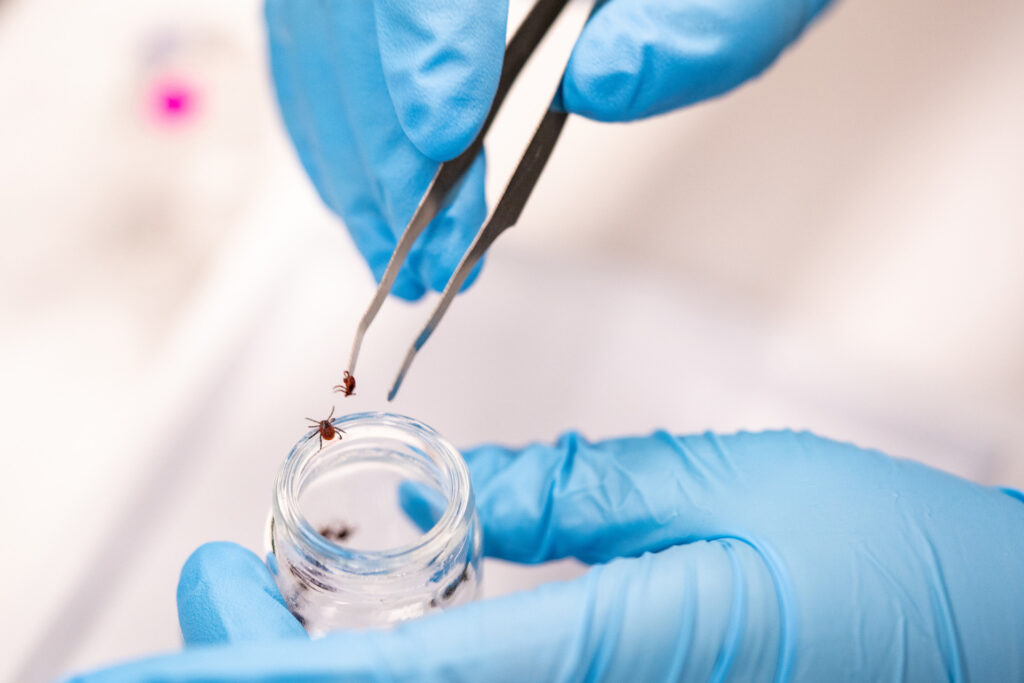A collaborative, grant-funded program called Vector Educational Center for Training, Outreach and Resources, VECTOR, aims to expand and improve control capacity against vector-borne diseases across Texas and Louisiana.
The City of New Orleans Mosquito Control Board, in partnership with Texas A&M AgriLife Extension Service, received a five-year grant totaling more than $8 million, about $1.6 million per year, from the Centers for Disease Control and Prevention. The funding will buttress regional outreach efforts focused on mosquito abatement by creating the Gulf Shores VECTOR program.
The VECTOR program’s leaders are principal investigator Claudia Riegel, Ph.D., with the City of New Orleans Mosquito, Termite and Rodent Control Board and Janet Hurley, AgriLife Extension integrated pest management specialist, Dallas. Their plan is to educate the public and municipal decision-makers, and to train public and private pest management professionals.
The grant came from an $8 billion investment by the CDC to support local public health departments and pest control programs across the country against vectors like mosquitoes, flies, ticks and fleas.
“This grant is a large investment,” Hurley said. “Over the past couple of decades, we’ve seen a surge in bubonic plague, dengue fever, anthrax and other diseases that were considered eradicated. COVID-19 also exposed vulnerabilities on the infectious disease front. As a result, they are ramping up efforts to take more of a proactive approach to public health, and vector management is a big part of that.”
Building, boosting network to fight vector-borne diseases
Hurley said VECTOR will succeed by building relationships. She and Riegel have a long-standing relationship built on the premise that communication and cooperation make them better at protecting the public.
VECTOR will also include collaboration and cooperation across federal, state and local agencies, including CDC, the U.S. Department of Agriculture, Texas Department of Agriculture and Texas Health and Human Services. Established collaborators will also include academic institutions like Center of Invasive Species and Ecosystem Health at the University of Georgia, and organizations like the National Environmental Health Association.
At the local level, Hurley, Riegel and Sonja Swiger, Ph.D., AgriLife Extension entomologist and professor in the Department of Entomology in the Texas A&M College of Agriculture and Life Sciences, will engage with urban and rural municipalities, school districts and private pest control operators to educate and coordinate efforts against disease vectors.
“We are working with everybody,” Hurley said. “We’re working with partners and building partnerships by engaging with stakeholders from Texas, Louisiana and across the southeast. We want to get everyone on the same page and working toward the same goal.”
Bringing awareness, control capacity to vector-borne diseases
VECTOR will capitalize on AgriLife Extension’s educational capacity, its presence in all 254 Texas counties, and the combined expertise of two of the nation’s top integrated pest management programs. Outreach will focus on core vector control topics aimed at four levels—awareness, beginner, intermediate and expert.
“Monitoring and control programs will have a bigger impact if everyone is working together,” Hurley said. “We want to provide the expertise and tools that will help cities with vector programs improve their effectiveness, and we want to help leaders in smaller, rural communities develop a program that is effective within their capabilities.”
She said the goal is to raise awareness within the general public and among local leaders like mayors, city council members, county commissioners and school board members who make decisions regarding pest abatement program funding.
Many municipalities have well-established vector management programs with dedicated personnel and annual budgets. Others are not aware of the need or resources available to monitor and control pests like mosquitoes, and many hire external pest-prevention operators only when infestations or disease outbreaks reach a critical point.
Informing leaders about resources and the network of AgriLife Extension integrated pest management, entomology and public health experts while establishing relationships will be key to addressing the varying and inconsistent levels of vector prevention across the state.
Hurley and Swiger are actively evaluating the effectiveness of existing programs and assessing needs and capabilities across the state. They are presenting leaders with a range of options that reach minimum and maximum standards when it comes to vector pests.
Outreach efforts will also be directed toward increasing vector-borne disease prevention and control education and training opportunities for students and pest management professionals, Hurley said. The success of outreach efforts will be evaluated based on how municipalities’ vector management programs improve individually and as part of an overall network dedicated to monitoring and controlling vectors.
Buy-in to proactive approaches are key, Hurley said. VECTOR hopes to level off the peaks and valleys of reactive approaches to controlling vectors that rise and fall based on disease outbreaks, Swiger said.
“VECTOR is good for us and good for our ability to educate stakeholders, professionals and the next generation of vector control experts,” Swiger said. “There is so much we want to do, and over time we will show the value in what we do. Then we can continue to leverage strategic partnerships to improve the entire network that safeguards this critical aspect of public health.”




